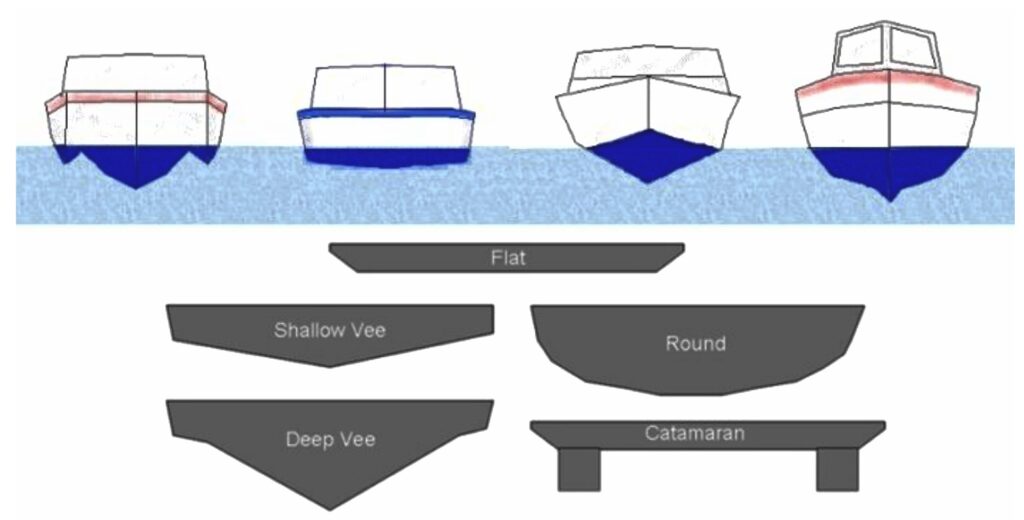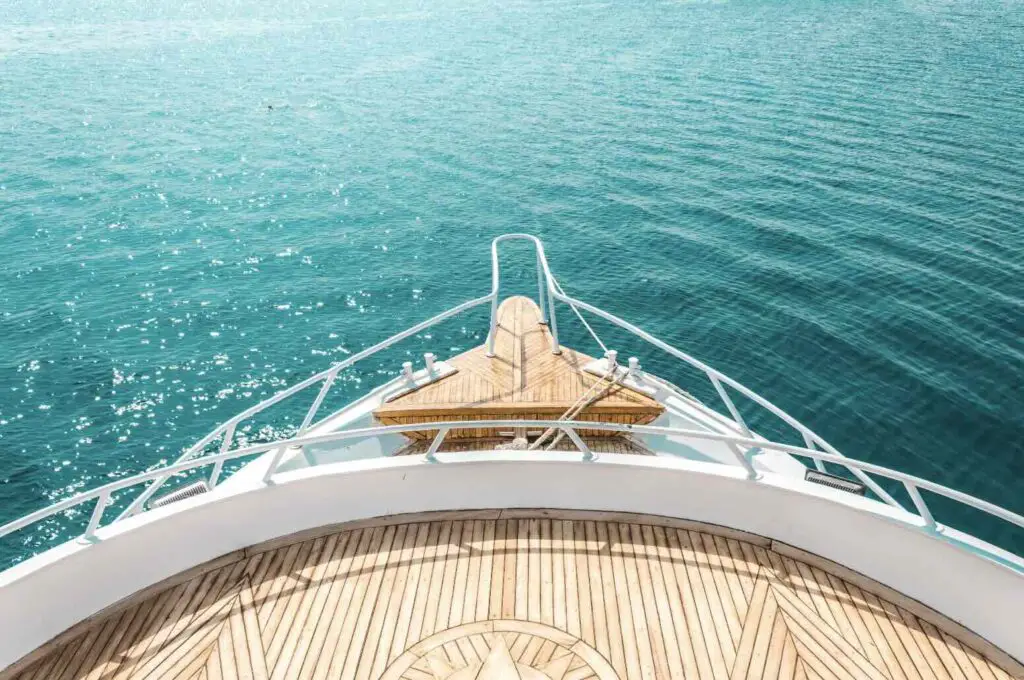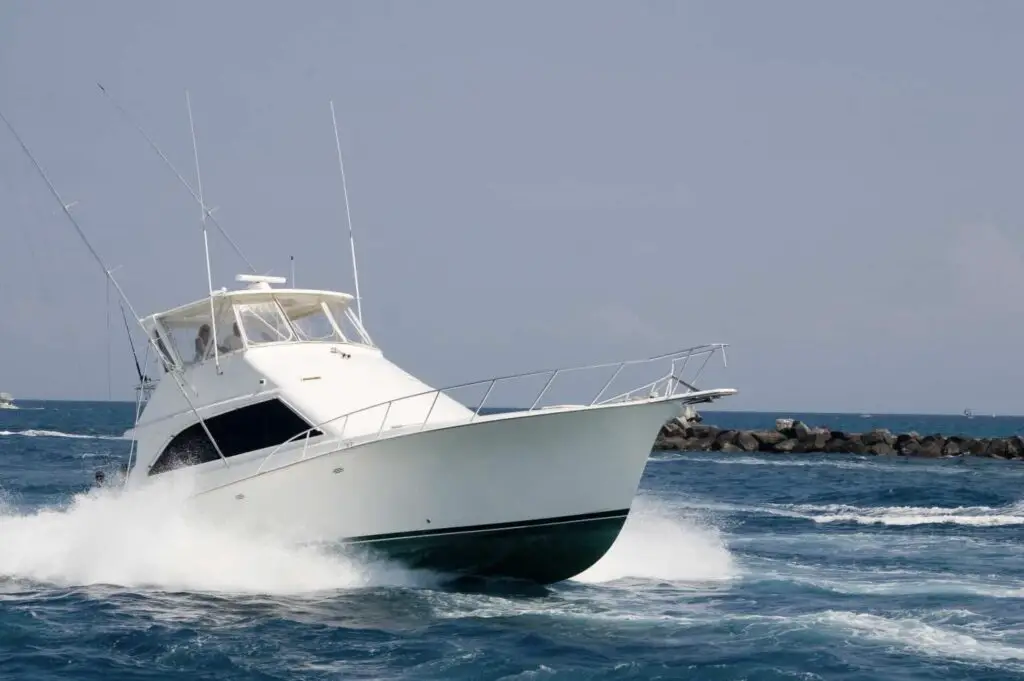The world of maritime navigation is filled with specialized jargon that can seem opaque to those not versed in the language of the sea. Yet, amidst the technological marvels of modern navigation, the terms “bow” and “stern” endure as crucial identifiers for the front and back of a boat, respectively.
The bow and stern terms persistence, even in an era dominated by GPS and sophisticated autopilot systems, speaks to the enduring legacy of traditional seafaring. Join me as we chart a course through these time-honored concepts, shedding light on their key differences and enduring importance in maritime lore.
Table of Contents
- Understanding The Bow And Stern: Navigating Maritime Terminology
- The 5 Main Differences Between Bow And Stern
- Delving Deeper: The Bow Of A Ship
- Exploring The Stern Of A Ship
- Related Questions
Understanding The Bow And Stern: Navigating Maritime Terminology
Whenever you set foot on a vessel, whether it’s for sailing or power boating, it’s vital to have a clear understanding of the boat’s anatomy, particularly the bow and stern.
Knowing the precise locations and functions of these two parts not only enhances your nautical knowledge but also ensures safer and more efficient handling of the boat. Continue with us as we delve into the intricacies of the bow and stern, equipping you with the essentials of maritime orientation.
The Age-Old Maritime Compass: Bow And Stern Explained
The nautical realm is rife with terminology that can mystify the uninitiated. Even with today’s advanced maritime technology, two terms that have stood the test of time are “bow” and “stern.” These words distinguish the front (bow) from the back (stern) of a boat.
Their continued relevance in the age of GPS and autopilot systems underscores the timeless nature of seafaring. Let’s navigate through the complexities of these concepts and demystify their main differences.
The 5 Main Differences Between Bow And Stern
While the bow and stern are integral parts of a boat’s structure, they are not interchangeable and possess distinct characteristics.
Join us as we uncover the five key differences between the bow and stern, providing insights into their unique roles and features within the maritime world.

Location Or Position Between Bow And Stern
The most fundamental difference is their location. The bow points forward; it is the very first part of a boat to slice through water. When you face forward on a ship, you are looking towards the bow.
The stern is at the back, following the rest of the ship as it moves through the water. It’s often where you’ll find the vessel’s name proudly displayed.
Hull Shape
Function dictates form in maritime design. The bow, built for dividing waves and reducing resistance, often sports a pointed, tapered shape. This aerodynamic design is essential for efficiency, especially in rough waters.

The stern, conversely, tends to be broader, flatter, and more rounded to accommodate the various functional elements housed there, including the ship’s propulsion systems.
Function
As the front-runner of the ship’s structure, the bow is designed to face the oncoming waves, curving upward to prevent water from splashing onto the deck. In contrast, the stern’s functions are more diverse.

It’s from here that a captain steers, leveraging the rudder that is typically mounted aft. The stern also supports the primary propulsion machinery, such as engines and propellers, vital for the vessel’s movement and maneuverability.
Distinctive Elements
Specific features and equipment are located at the bow and stern, aligned with their functions. At the bow, you’ll often find the anchor and its associated winch, bow thrusters, and sometimes a bulbous bow below the waterline to enhance fuel efficiency.

The stern, on the other hand, is the site of the helm, rudders, propellers, and navigation lights. These stern-based tools play critical roles in guiding and propelling the vessel.
Waterline Inclination
Even the waterline of a ship reveals the purposeful distinction between bow and stern. The bow’s upward slope (“flaring”) helps with buoyancy and minimizes spray.
Meanwhile, the stern might feature a downward slope (or “tumblehome”), particularly on older designs, contributing to the aesthetics and sometimes the aerodynamics of the vessel.
Delving Deeper: The Bow Of A Ship
The bow’s history is as deep and wide as the oceans it cuts through. Stemming from the Latin “prora,” the term has transcended centuries, solidifying its place in the maritime lexicon.
The bow is the maritime spearhead, the point of first contact with the elements. Its design is no mere happenstance; the bow is crafted to part waters with minimal effort, allowing for smooth sailing and efficient fuel consumption.
In yesteryears, the bow often bore the figurehead – a carved wooden decoration or symbolic figure. Today, the bow still holds essential navigational and operational tools, like the anchor, which secures the vessel. Its shape and structure are a testament to the ingenuity of naval architecture, marrying form and function in a seamless blend.
Exploring The Stern Of A Ship
The stern, the rear, serves as the ship’s rudder-driven guide. It is the control center of the vessel’s direction and houses the thrust power. The evolution of the stern has seen it become broader and more stable to accommodate essential machinery without compromising the ship’s balance and agility.

Historically, the stern has been a place of social and operational importance – the captain’s quarters were often located here, signifying authority and control. In today’s shipping and pleasure craft, the stern is a hub of activity, home to essential equipment like the ship’s rudder, propeller, and often, the engine itself.
When we speak of a ship’s bow and stern, we’re not just referencing its front and rear. We’re tapping into a lineage of maritime tradition and practicality, which has, for centuries, governed how vessels ply the oceans.
The bow and stern are more than mere points on a ship; they represent the culmination of maritime expertise, design evolution, and the unchanging laws of physics that govern seafaring.
Understanding the distinctions between the bow and stern goes beyond terminology; it’s about grasping the art and science of naval architecture appreciating the vessel as a crafted entity designed to navigate.
At A Bus On A Dusty Road, we talk about everything about travel, life, sailing, and ex-pat living. We are all about “Living Life As A Global Citizen.” We explore social, cultural, and economic issues and travel.
We would love to have you be part of our community. Sign up for our newsletter to keep up-to-date by clicking here. If you have any questions, you can contact me, Anita, by clicking here.
Listen to our Podcast called Dusty Roads. You can find it on all major podcast platforms. Try out listening to one of our podcasts by clicking here.
Subscribe to our A Bus On A Dusty Road YouTube Channel filled with great videos and information by clicking here.
Related Questions
All About Sailing In The Philippines
The Philippines has long been a sailors’ paradise for cruising and learning to sail a boat. For 7000 islands, there are many places that you can explore within the Philippines. It can be an area that can hit many typhoons, so to cruise or sail the Philippines, you need to understand the best time to go there.
By clicking here, you can discover All About Sailing In The Philippines.
How Much Wind Is Too Much For A Beginner Sailor?
For a beginner sailor, the wind is usually recommended to be under 10 knots. Those who are more experienced or with a larger boat can consider going up to 12 knots of wind. A knot is not the same as miles per hour or kilometer per hour but is faster than these measurements.
By clicking here, you can discover How Much Wind Is Too Much For A Beginner Sailor?
No Experience Sailing, 6 Tips To Get Started
If you are going to take up sailing, then the first thing you must do is get on a boat and find out if sailing is suitable. The best sailors can handle their boats in all kinds and types of weather. Find a class that you can join and get certified. Sailing requires knowledge and skill. Find yourself a sailing community that you can be part of.
By clicking here, you can discover No Experience Sailing, 6 Tips To Get Started.

